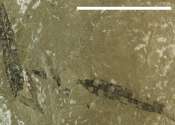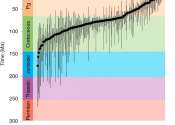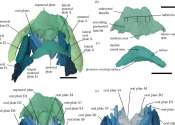Last update:
Evolution news
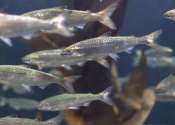
Genetic study finds early summer fishing can have an evolutionary impact, resulting in smaller salmon
Atlantic salmon are caught by fisheries when the fish are migrating to spawn. A new study led by the University of Helsinki explored how salmon caught at different times during their spawning migration differ from each other ...
Evolution
4 hours ago
0
43

Limited adaptability is making freshwater bacteria vulnerable to climate change
Freshwater bacteria with small genomes frequently undergo prolonged periods of adaptive stagnation. Based on genomic analyses of samples from Lake Zurich and other European lakes, researchers at the University of Zurich have ...
Evolution
9 hours ago
0
5
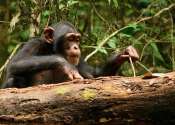
Chimps shown to learn and improve tool-using skills even as adults
Chimpanzees continue to learn and hone their skills well into adulthood, a capacity that might be essential for the evolution of complex and varied tool use, according to a study published May 7 in the open-access journal ...
Plants & Animals
May 7, 2024
0
223
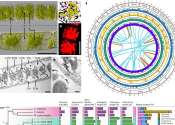
International team cracks genomic code for earliest forms of terrestrial plant life
Plant life first emerged on land about 550 million years ago, and an international research team co-led by University of Nebraska–Lincoln computational biologist Yanbin Yin has cracked the genomic code of its humble beginnings, ...
Evolution
May 2, 2024
0
641

Study is first to describe and recreate lemurs' one-of-a-kind vocal structure
New research has discovered that lemurs, the small primates native to Madagascar, are capable of exaggerating their size thanks to the unique structure of their larynx.
Plants & Animals
Apr 30, 2024
0
33

Adaptation of photosynthetic mechanism in air plants occurs through gene duplication, study finds
Researchers at the University of Vienna, along with collaborators from France, Germany, Switzerland and the U.S., have achieved a breakthrough in understanding how genetic drivers influence the evolution of a specific photosynthesis ...
Plants & Animals
Apr 30, 2024
0
159

Genetic adaptations have impacted the blood compositions of two populations from Papua New Guinea, finds study
Papua New Guinea (PNG) has a wide range of environments, each presenting unique challenges to human survival. Highlanders and lowlanders of PNG are striking examples of populations facing distinct environmental stress. Whereas ...
Evolution
Apr 30, 2024
0
105
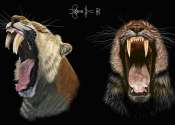
Evidence suggests saber-toothed cats held onto their baby teeth to stabilize their sabers
California's state fossil—are familiar to anyone who has ever visited Los Angeles' La Brea Tar Pits, a sticky trap from which more than 2,000 saber-toothed cat skulls have been excavated over more than a century.
Evolution
Apr 30, 2024
0
412

Climate change reveals intricate dynamics of reproductive barriers in marine species
Monash University scientists have uncovered insights into how rising temperatures influence the reproductive interactions and species boundaries of marine organisms.
Evolution
Apr 29, 2024
0
1
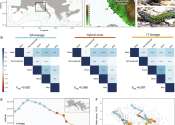
Aggressive wall lizard provides clues to understanding evolution
Body shape, color and behavior often evolve together as species adapt to their environment. Researchers from Lund University in Sweden have studied this phenomenon in a specific type of large, bright green and aggressive ...
Plants & Animals
Apr 29, 2024
0
7
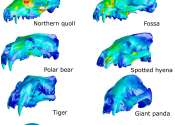
Study sheds light on the diversity of carnivore skull shapes and their function
In a study published in Nature Communications, a team of international researchers led by Gabriele Sansalone and Carmelo Fruciano has made a significant discovery about the diversity of skull shapes in carnivores.
Plants & Animals
Apr 29, 2024
0
32
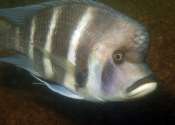
Cichlid fishes' curiosity promotes biodiversity: How exploratory behavior aids in ecological adaptation
Cichlid fishes exhibit differing degrees of curiosity. The cause for this lies in their genes, as reported by researchers from the University of Basel in the journal Science. This trait influences the cichlids' ability to ...
Evolution
Apr 25, 2024
0
66

Yeast study offers possible answer to why some species are generalists and others specialists
In a landmark study based on one of the most comprehensive genomic datasets ever assembled, a team led by scientists at the University of Wisconsin–Madison and Vanderbilt University offer a possible answer to one of the ...
Evolution
Apr 25, 2024
0
352

The rise of microbial cheaters in iron-limited environments: Study reveals their evolutionary history
Competition and cooperation are fundamental forces that govern the evolutionary and ecological dynamics among species. The balance between these forces varies across ecological contexts, with some environments favoring cooperative ...
Evolution
Apr 25, 2024
0
3
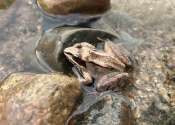
Researcher finds that wood frogs evolved rapidly in response to road salts
When we think of evolution, we think of a process that happens over hundreds or thousands of years. In research published in Ecology and Evolution a team led by Rick Relyea, Ph.D., professor of biological sciences and David ...
Evolution
Apr 24, 2024
0
554
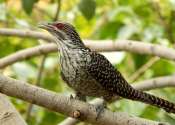
Evolutionary biologists show that the color variants of female cuckoos are based on ancient mutations
Every cuckoo is an adopted child—raised by foster parents, into whose nest the cuckoo mother smuggled her egg. The cuckoo mother is aided in this subterfuge by her resemblance to a bird of prey. There are two variants of ...
Plants & Animals
Apr 24, 2024
0
130

How evolution has optimized the magnetic sensor in birds
Migratory birds are able to navigate and orientate with astonishing accuracy using various mechanisms, including a magnetic compass. A team led by biologists Dr. Corinna Langebrake and Prof. Dr. Miriam Liedvogel from the ...
Plants & Animals
Apr 24, 2024
0
1229

A key gene helps explain how the ability to glide has emerged over-and-over during marsupial evolution
People say "When pigs fly" to describe the impossible. But even if most mammals are landlubbers, the ability to glide or fly has evolved again and again during mammalian evolution, in species ranging from bats to flying squirrels. ...
Evolution
Apr 24, 2024
0
1
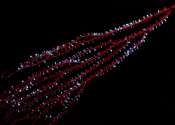
Bioluminescence first evolved in animals at least 540 million years ago, pushing back previous oldest dated example
Bioluminescence first evolved in animals at least 540 million years ago in a group of marine invertebrates called octocorals, according to the results of a new study from scientists with the Smithsonian's National Museum ...
Evolution
Apr 23, 2024
0
119

Flat faces and difficulty breathing: How pet trends have harmed animal health—and what we can we do about it
Dogs come in all shapes and sizes. We've molded some of them to have large protruding eyes, sloping backs and shortened legs through selective breeding.
Evolution
Apr 23, 2024
0
1
Other news

Study sheds light on the origin of elasticity in glasses and gels

Quantum simulators solve physics puzzles with colored dots

The interference of many atoms, and a new approach to boson sampling

Researchers map out anatomy of wooden breast syndrome in broiler chickens

Physicists reach atomic-scale telegraphy with light

Mediterranean marine worm has developed eyes 'as big as millstones'

An adjuvant made in yeast could lower vaccine cost and boost availability

Marine bacteria team up to produce a vital vitamin

Catalyst search shows how computing can take the guesswork out of chemistry






















































